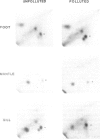Abstract
A large variety of environmental carcinogens are metabolically activated to electrophilic metabolites that can bind to nucleic acids and protein, forming covalent adducts. The formation of DNA-carcinogen adducts is thought to be a necessary step in the action of most carcinogens. Recently, a variety of new fluorescence, immunochemical, and radioactive-postlabeling procedures have been developed that allow the sensitive measurement of DNA-carcinogen adducts in organisms exposed to environmental carcinogens. In some cases, similar procedures have been developed for protein-carcinogen adducts. In an organism with active metabolic systems for a given carcinogen, adducts are generally much longer lived than the carcinogens that formed them. Thus, the detection of DNA- or protein-carcinogen adducts in aquatic foodstuffs can act as an indicator of prior carcinogen exposure. The presence of DNA adducts would, in addition, suggest a mutagenic/carcinogenic risk to the aquatic organism itself. Vertebrate fish are characterized by high levels of carcinogen metabolism, low body burdens of carcinogen, the formation of carcinogen-macromolecule adducts, and the occurrence of pollution-related tumors. Shellfish, on the other hand, have low levels of carcinogen metabolism, high body burdens of carcinogen, and have little or no evidence of carcinogen-macromolecule adducts or tumors. The consumption of carcinogen adducts in aquatic foodstuffs is unlikely to represent a human health hazard. There are no metabolic pathways by which protein-carcinogen or DNA-carcinogen adducts could reform carcinogens. Incorporation via salvage pathways of preformed nucleoside-carcinogen adducts from foodstuffs into newly synthesized human DNA is theoretically possible.(ABSTRACT TRUNCATED AT 250 WORDS)
Full text
PDF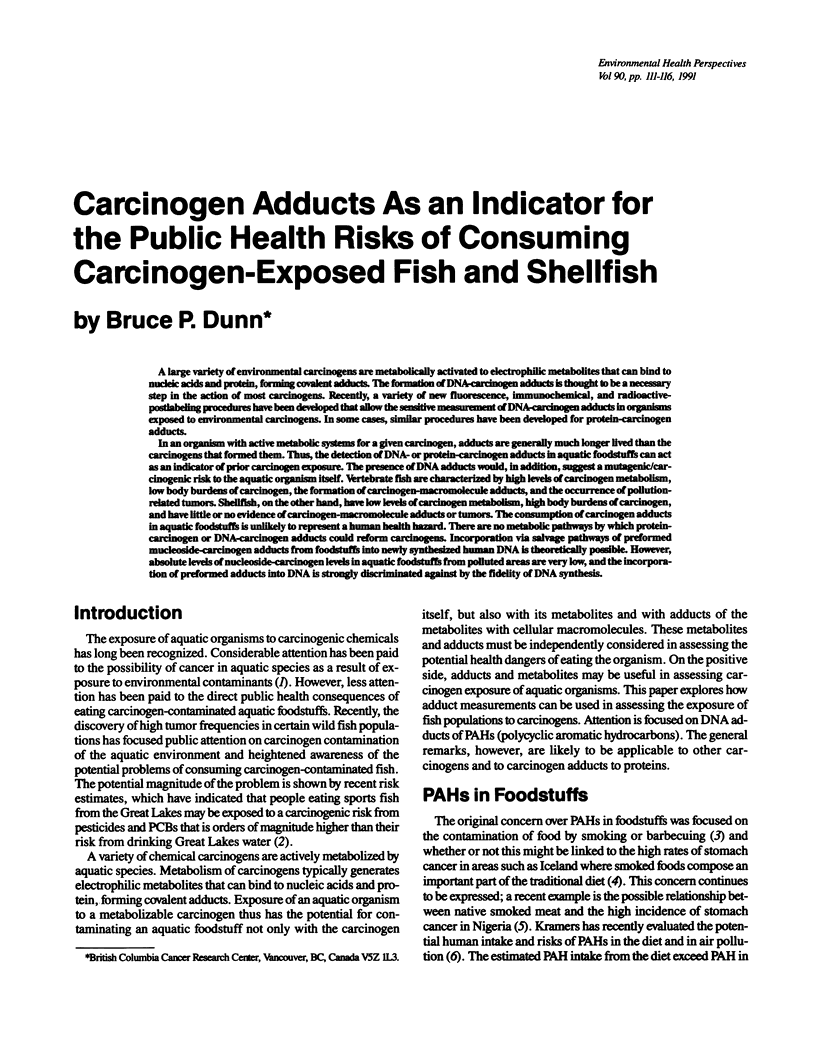
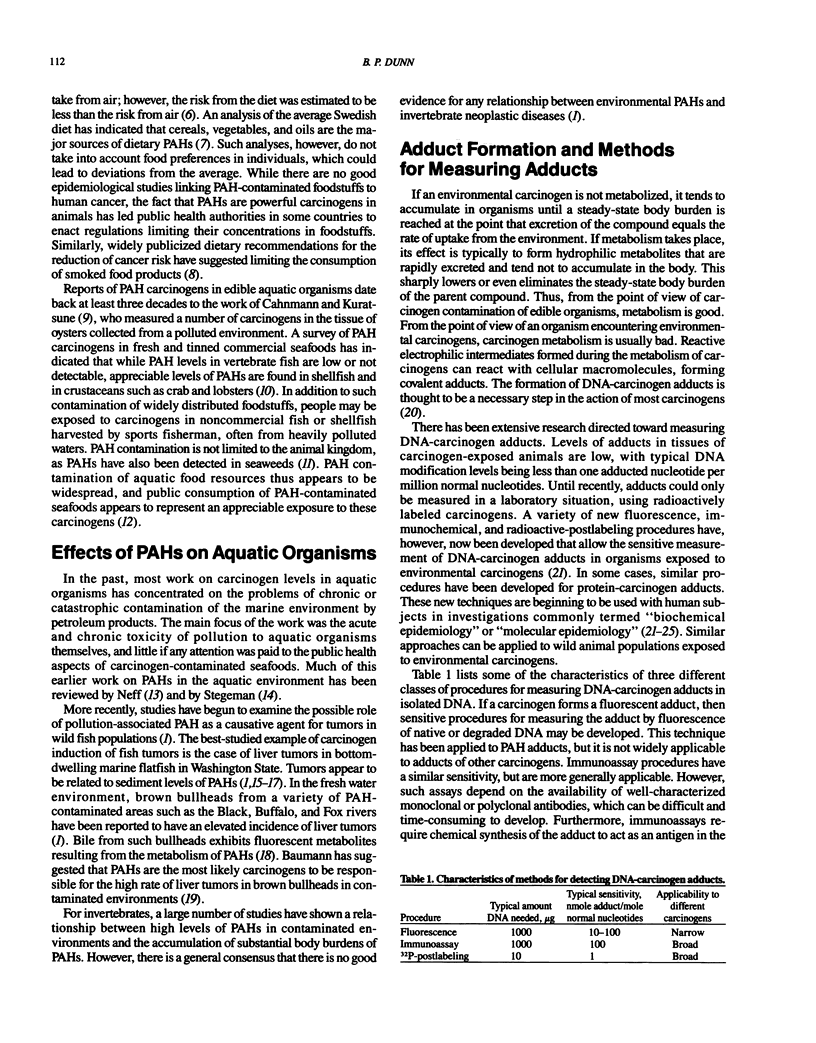
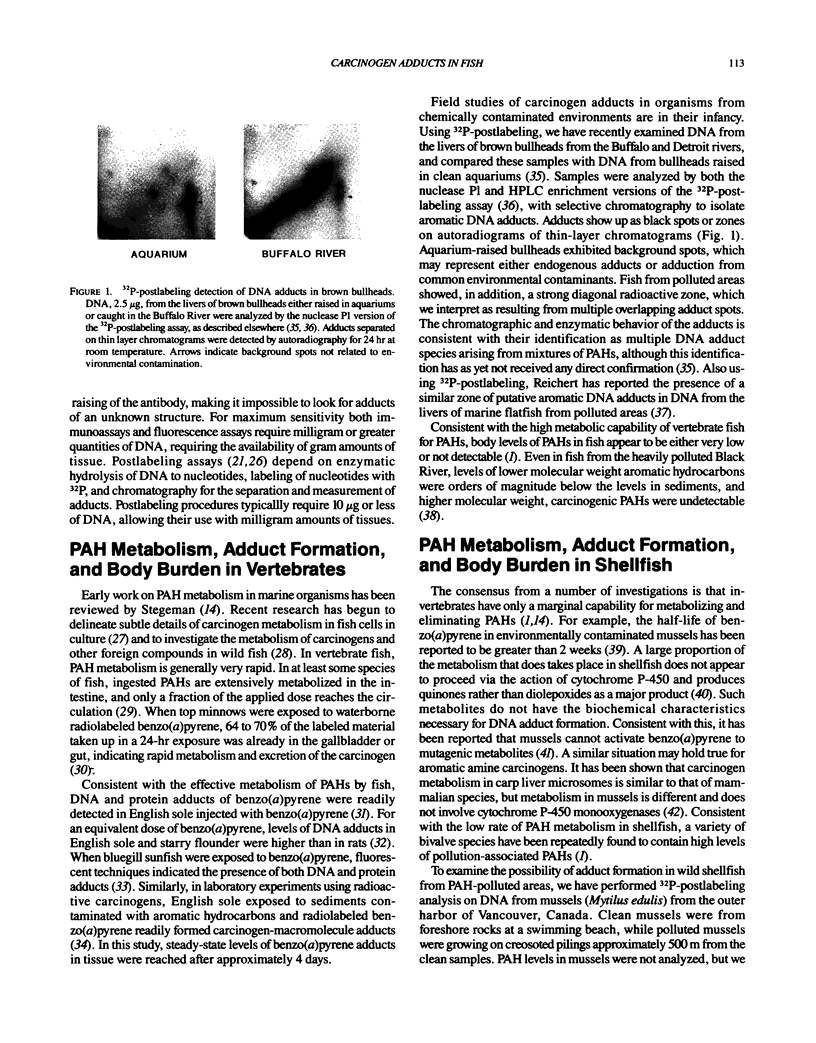
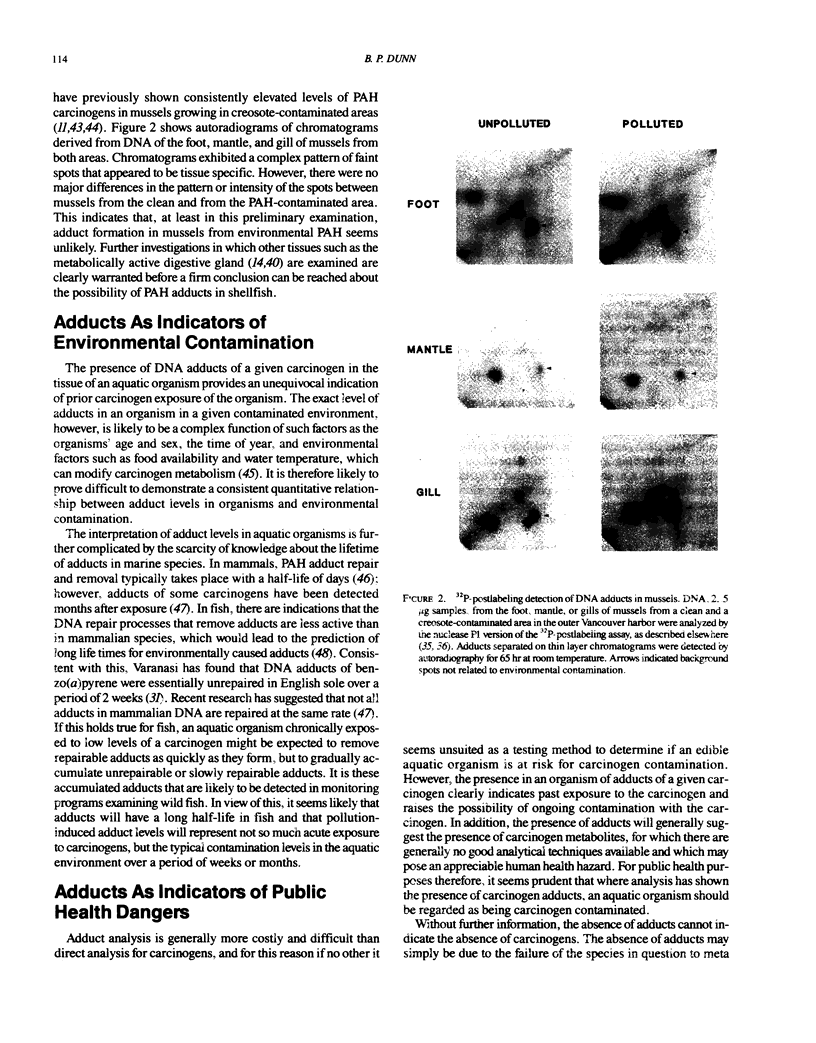
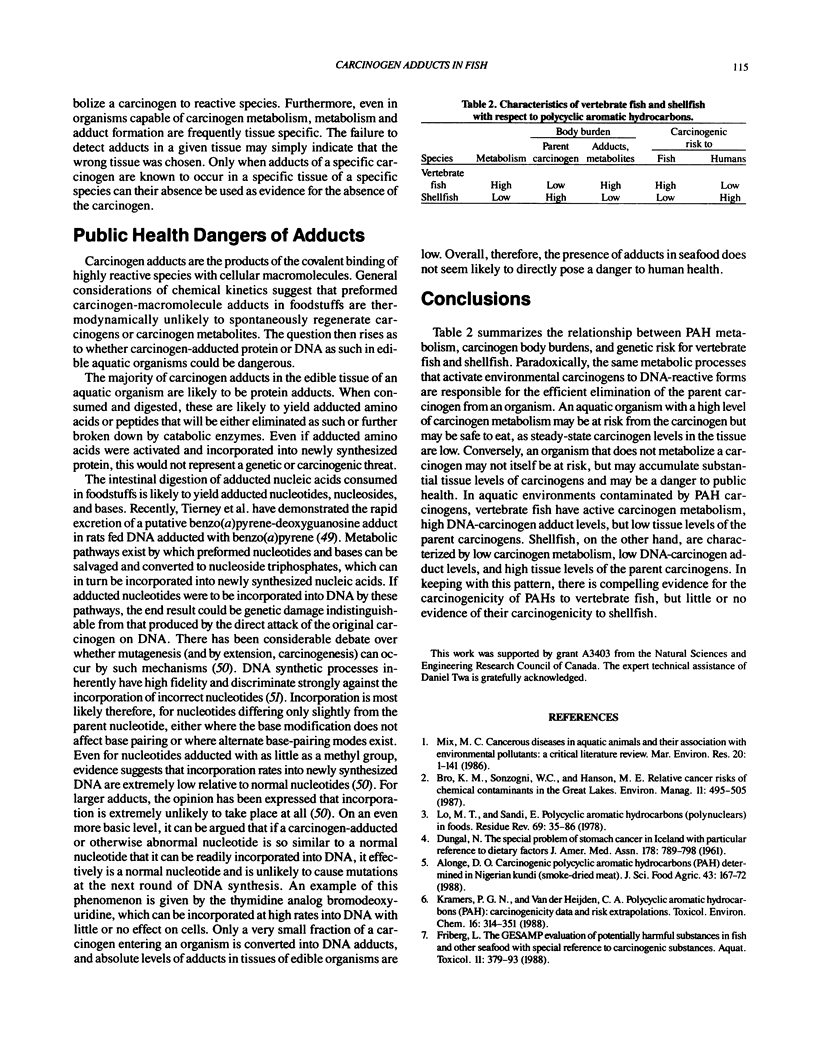
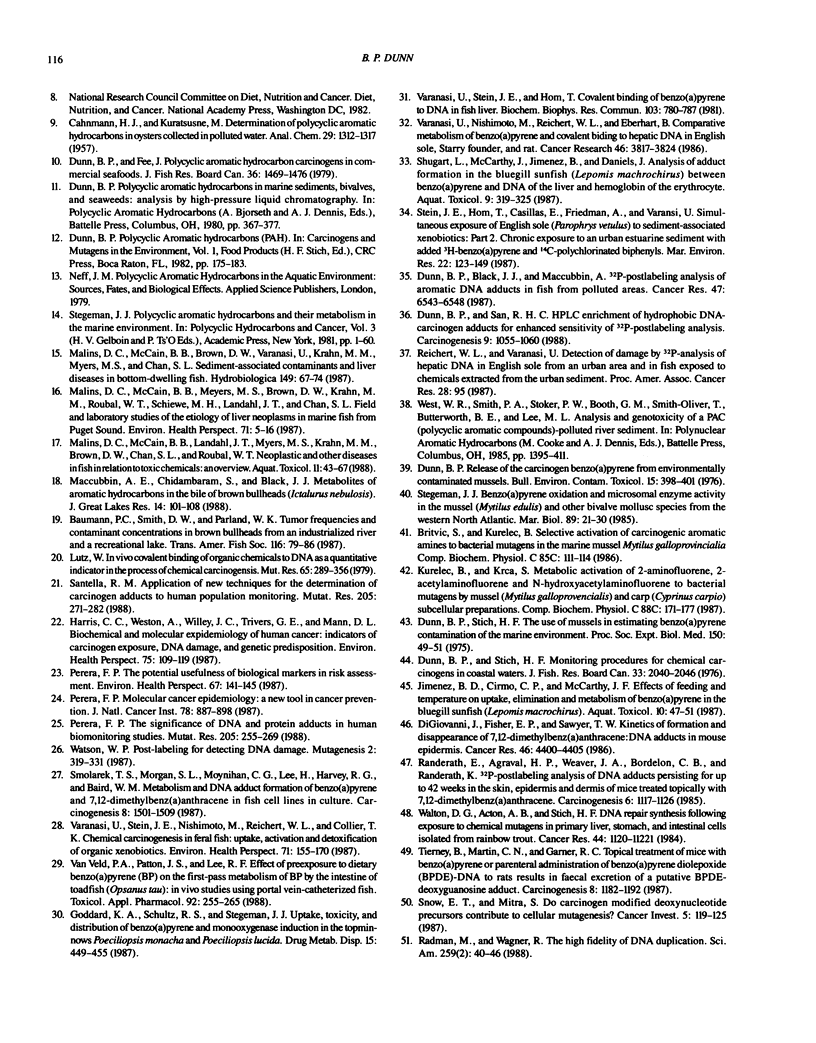
Images in this article
Selected References
These references are in PubMed. This may not be the complete list of references from this article.
- DUNGAL N. The special problem of stomach cancer in Iceland, with particular reference to dietary factors. JAMA. 1961 Nov 25;178:789–798. doi: 10.1001/jama.1961.03040470005002. [DOI] [PubMed] [Google Scholar]
- DiGiovanni J., Fisher E. P., Sawyer T. W. Kinetics of formation and disappearance of 7,12-dimethylbenz(a)anthracene:DNA adducts in mouse epidermis. Cancer Res. 1986 Sep;46(9):4400–4405. [PubMed] [Google Scholar]
- Dunn B. P., Black J. J., Maccubbin A. 32P-postlabeling analysis of aromatic DNA adducts in fish from polluted areas. Cancer Res. 1987 Dec 15;47(24 Pt 1):6543–6548. [PubMed] [Google Scholar]
- Dunn B. P., San R. H. HPLC enrichment of hydrophobic DNA--carcinogen adducts for enhanced sensitivity of 32P-postlabeling analysis. Carcinogenesis. 1988 Jun;9(6):1055–1060. doi: 10.1093/carcin/9.6.1055. [DOI] [PubMed] [Google Scholar]
- Dunn B. P., Stich H. F. Release of the carcinogen benzo (a) pyrene from environmentally contaminated mussels. Bull Environ Contam Toxicol. 1976 Apr;15(4):398–401. doi: 10.1007/BF01685061. [DOI] [PubMed] [Google Scholar]
- Dunn B. P., Stich H. F. The use of mussels in estimating benzo(a)pyrene contamination of the marine environment. Proc Soc Exp Biol Med. 1975 Oct;150(1):49–51. doi: 10.3181/00379727-150-38971. [DOI] [PubMed] [Google Scholar]
- Goddard K. A., Schultz R. J., Stegeman J. J. Uptake, toxicity, and distribution of benzo[a]pyrene and monooxygenase induction in the topminnows Poeciliopsis monacha and Poeciliopsis lucida. Drug Metab Dispos. 1987 Jul-Aug;15(4):449–455. [PubMed] [Google Scholar]
- Harris C. C., Weston A., Willey J. C., Trivers G. E., Mann D. L. Biochemical and molecular epidemiology of human cancer: indicators of carcinogen exposure, DNA damage, and genetic predisposition. Environ Health Perspect. 1987 Nov;75:109–119. doi: 10.1289/ehp.8775109. [DOI] [PMC free article] [PubMed] [Google Scholar]
- Lo M. T., Sandi E. Polycyclic aromatic hydrocarbons (polynuclears) in foods. Residue Rev. 1978;69:35–86. doi: 10.1007/978-1-4612-6281-7_2. [DOI] [PubMed] [Google Scholar]
- Malins D. C., McCain B. B., Myers M. S., Brown D. W., Krahn M. M., Roubal W. T., Schiewe M. H., Landahl J. T., Chan S. L. Field and laboratory studies of the etiology of liver neoplasms in marine fish from Puget Sound. Environ Health Perspect. 1987 Apr;71:5–16. doi: 10.1289/ehp.87715. [DOI] [PMC free article] [PubMed] [Google Scholar]
- Perera F. P. Molecular cancer epidemiology: a new tool in cancer prevention. J Natl Cancer Inst. 1987 May;78(5):887–898. [PubMed] [Google Scholar]
- Perera F. P. The significance of DNA and protein adducts in human biomonitoring studies. Mutat Res. 1988 May-Aug;205(1-4):255–269. doi: 10.1016/0165-1218(88)90021-3. [DOI] [PubMed] [Google Scholar]
- Perera F. The potential usefulness of biological markers in risk assessment. Environ Health Perspect. 1987 Dec;76:141–145. doi: 10.1289/ehp.8776141. [DOI] [PMC free article] [PubMed] [Google Scholar]
- Radman M., Wagner R. The high fidelity of DNA duplication. Sci Am. 1988 Aug;259(2):40–46. doi: 10.1038/scientificamerican0888-40. [DOI] [PubMed] [Google Scholar]
- Randerath E., Agrawal H. P., Weaver J. A., Bordelon C. B., Randerath K. 32P-postlabeling analysis of DNA adducts persisting for up to 42 weeks in the skin, epidermis and dermis of mice treated topically with 7,12-dimethylbenz[a]anthracene. Carcinogenesis. 1985 Aug;6(8):1117–1126. doi: 10.1093/carcin/6.8.1117. [DOI] [PubMed] [Google Scholar]
- Santella R. M. Application of new techniques for the detection of carcinogen adducts to human population monitoring. Mutat Res. 1988 May-Aug;205(1-4):271–282. doi: 10.1016/0165-1218(88)90022-5. [DOI] [PubMed] [Google Scholar]
- Smolarek T. A., Morgan S. L., Moynihan C. G., Lee H., Harvey R. G., Baird W. M. Metabolism and DNA adduct formation of benzo[a]pyrene and 7,12-dimethylbenz[a]anthracene in fish cell lines in culture. Carcinogenesis. 1987 Oct;8(10):1501–1509. doi: 10.1093/carcin/8.10.1501. [DOI] [PubMed] [Google Scholar]
- Snow E. T., Mitra S. Do carcinogen-modified deoxynucleotide precursors contribute to cellular mutagenesis? Cancer Invest. 1987;5(2):119–125. doi: 10.3109/07357908709018466. [DOI] [PubMed] [Google Scholar]
- Tierney B., Martin C. N., Garner R. C. Topical treatment of mice with benzo[a]pyrene or parenteral administration of benzo[a]pyrene diol epoxide-DNA to rats results in faecal excretion of a putative benzo[a]pyrene diol epoxide-deoxyguanosine adduct. Carcinogenesis. 1987 Sep;8(9):1189–1192. doi: 10.1093/carcin/8.9.1189. [DOI] [PubMed] [Google Scholar]
- Van Veld P. A., Patton J. S., Lee R. F. Effect of preexposure to dietary benzo[a]pyrene (BP) on the first-pass metabolism of BP by the intestine of toadfish (Opsanus tau): in vivo studies using portal vein-catheterized fish. Toxicol Appl Pharmacol. 1988 Feb;92(2):255–265. doi: 10.1016/0041-008x(88)90385-7. [DOI] [PubMed] [Google Scholar]
- Varanasi U., Nishimoto M., Reichert W. L., Le Eberhart B. T. Comparative metabolism of benzo(a)pyrene and covalent binding to hepatic DNA in English sole, starry flounder, and rat. Cancer Res. 1986 Aug;46(8):3817–3824. [PubMed] [Google Scholar]
- Varanasi U., Stein J. E., Hom T. Covalent binding of benzo[a]pyrene to dna in fish liver. Biochem Biophys Res Commun. 1981 Nov 30;103(2):780–787. doi: 10.1016/0006-291x(81)90517-9. [DOI] [PubMed] [Google Scholar]
- Varanasi U., Stein J. E., Nishimoto M., Reichert W. L., Collier T. K. Chemical carcinogenesis in feral fish: uptake, activation, and detoxication of organic xenobiotics. Environ Health Perspect. 1987 Apr;71:155–170. doi: 10.1289/ehp.8771155. [DOI] [PMC free article] [PubMed] [Google Scholar]
- Walton D. G., Acton A. B., Stich H. F. DNA repair synthesis following exposure to chemical mutagens in primary liver, stomach, and intestinal cells isolated from rainbow trout. Cancer Res. 1984 Mar;44(3):1120–1121. [PubMed] [Google Scholar]
- Watson W. P. Post-radiolabelling for detecting DNA damage. Mutagenesis. 1987 Sep;2(5):319–331. doi: 10.1093/mutage/2.5.319. [DOI] [PubMed] [Google Scholar]





